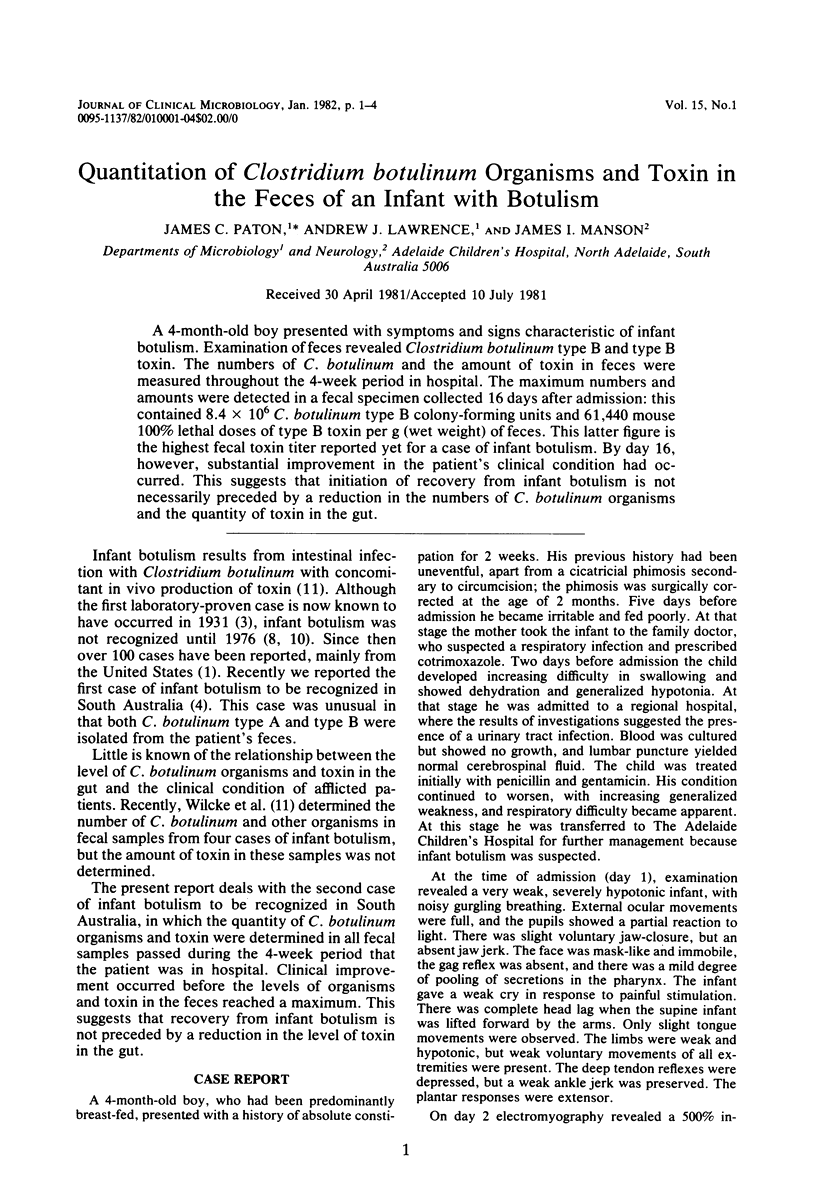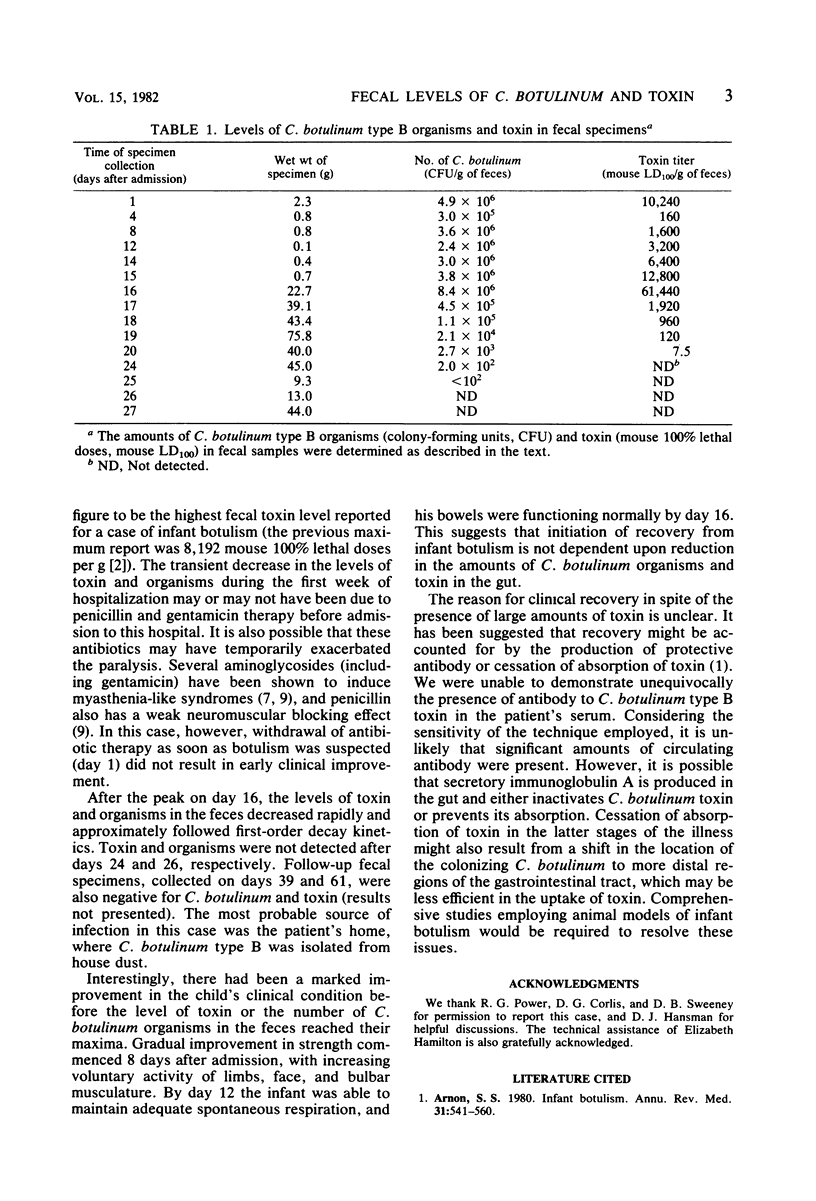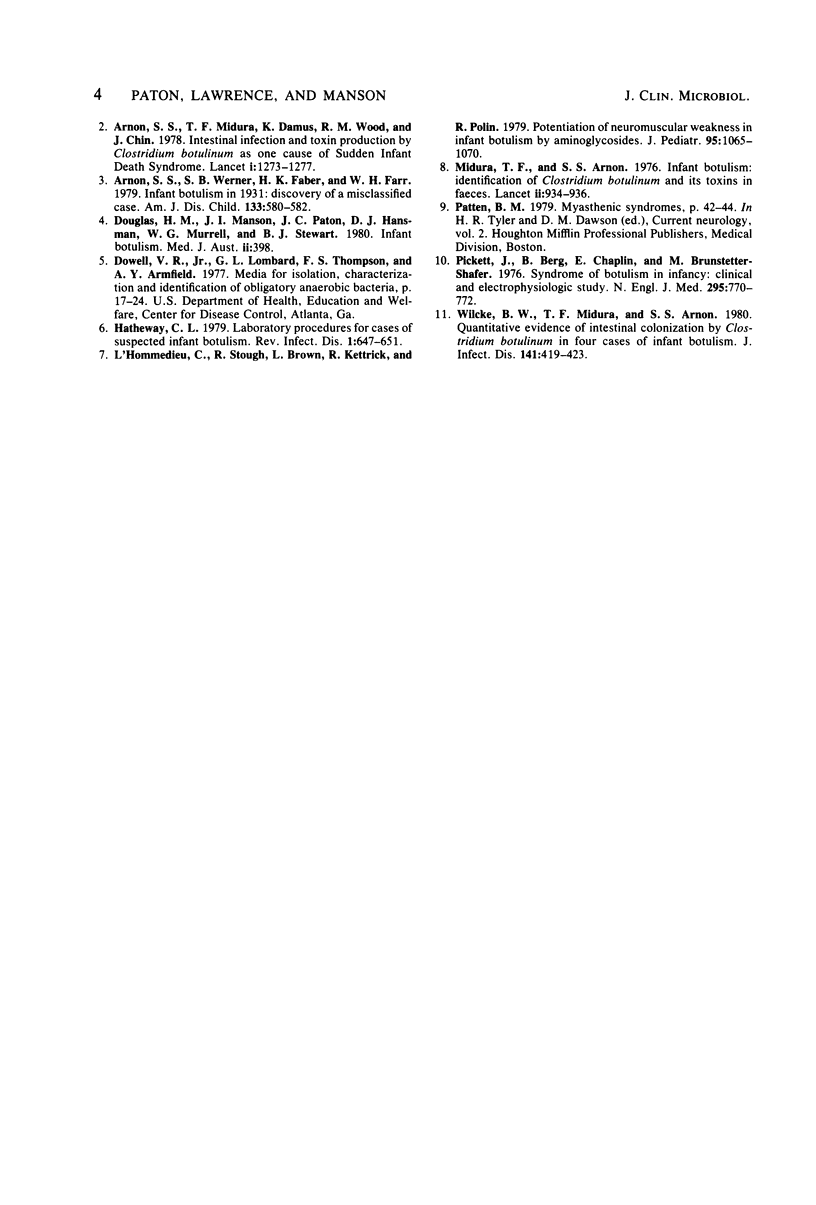Abstract
A 4-month-old boy presented with symptoms and signs characteristic of infant botulism. Examination of feces revealed Clostridium botulinum type B and type B toxin. The numbers of C. botulinum and the amount of toxin in feces were measured throughout the 4-week period in hospital. The maximum numbers and amounts were detected in a fecal specimen collected 16 days after admission: this contained 8.4 X 10(6) C. botulinum type B colony-forming units and 61,440 mouse 100% lethal doses of type B toxin per g (wet weight) of feces. This latter figure is the highest fecal toxin titer reported yet for a case of infant botulism. By day 16, however, substantial improvement in the patient's clinical condition had occurred. This suggests that initiation of recovery from infant botulism is not necessarily preceded by a reduction in the numbers of C. botulinum organisms and the quantity of toxin in the gut.
Full text
PDF



Selected References
These references are in PubMed. This may not be the complete list of references from this article.
- Arnon S. S. Infant botulism. Annu Rev Med. 1980;31:541–560. doi: 10.1146/annurev.me.31.020180.002545. [DOI] [PubMed] [Google Scholar]
- Arnon S. S., Midura T. F., Damus K., Wood R. M., Chin J. Intestinal infection and toxin production by Clostridium botulinum as one cause of sudden infant death syndrome. Lancet. 1978 Jun 17;1(8077):1273–1277. doi: 10.1016/s0140-6736(78)91264-3. [DOI] [PubMed] [Google Scholar]
- Arnon S. S., Werner S. B., Faber H. K., Farr W. H. Infant botulism in 1931. Discovery of a misclassified case. Am J Dis Child. 1979 Jun;133(6):580–582. doi: 10.1001/archpedi.1979.02130060020002. [DOI] [PubMed] [Google Scholar]
- Douglas H. M., Manson J. I., Paton J. C., Hansman D. J., Murrell W. G., Stewart B. J. Infant botulism. Med J Aust. 1980 Oct 4;2(7):398–398. doi: 10.5694/j.1326-5377.1980.tb131884.x. [DOI] [PubMed] [Google Scholar]
- Hatheway C. L. Laboratory procedures for cases of suspected infant botulism. Rev Infect Dis. 1979 Jul-Aug;1(4):647–651. doi: 10.1093/clinids/1.4.647. [DOI] [PubMed] [Google Scholar]
- L'Hommedieu C., Stough R., Brown L., Kettrick R., Polin R. Potentiation of neuromuscular weakness in infant botulism by aminoglycosides. J Pediatr. 1979 Dec;95(6):1065–1070. doi: 10.1016/s0022-3476(79)80314-5. [DOI] [PubMed] [Google Scholar]
- Midura T. F., Arnon S. S. Infant botulism. Identification of Clostridium botulinum and its toxins in faeces. Lancet. 1976 Oct 30;2(7992):934–936. doi: 10.1016/s0140-6736(76)90894-1. [DOI] [PubMed] [Google Scholar]
- Pickett J., Berg B., Chaplin E., Brunstetter-Shafer M. A. Syndrome of botulism in infancy: clinical and electrophysiologic study. N Engl J Med. 1976 Sep 30;295(14):770–772. doi: 10.1056/NEJM197609302951407. [DOI] [PubMed] [Google Scholar]
- Wilcke B. W., Jr, Midura T. F., Arnon S. S. Quantitative evidence of intestinal colonization by Clostridium botulinum in four cases of infant botulism. J Infect Dis. 1980 Apr;141(4):419–423. doi: 10.1093/infdis/141.4.419. [DOI] [PubMed] [Google Scholar]


